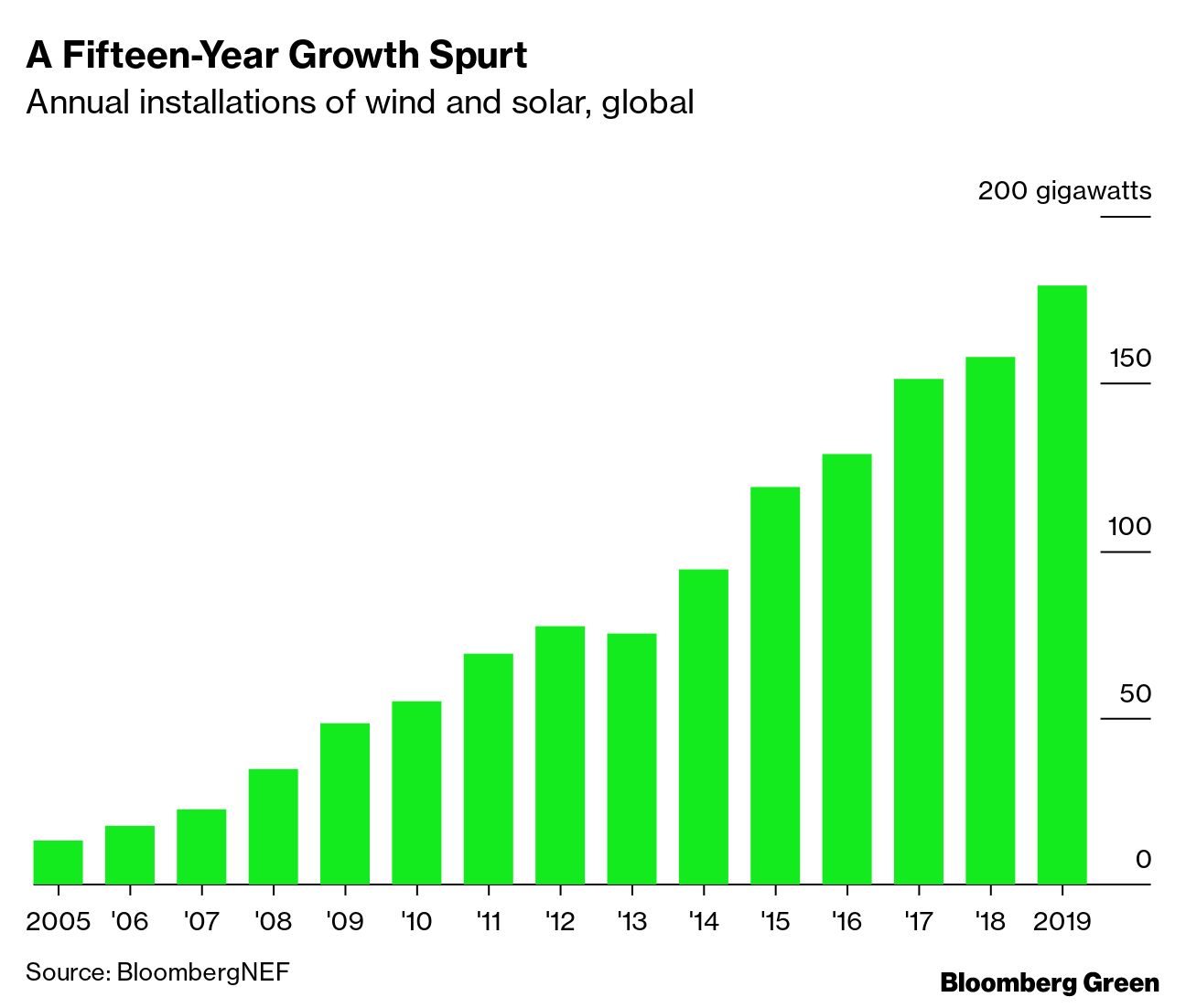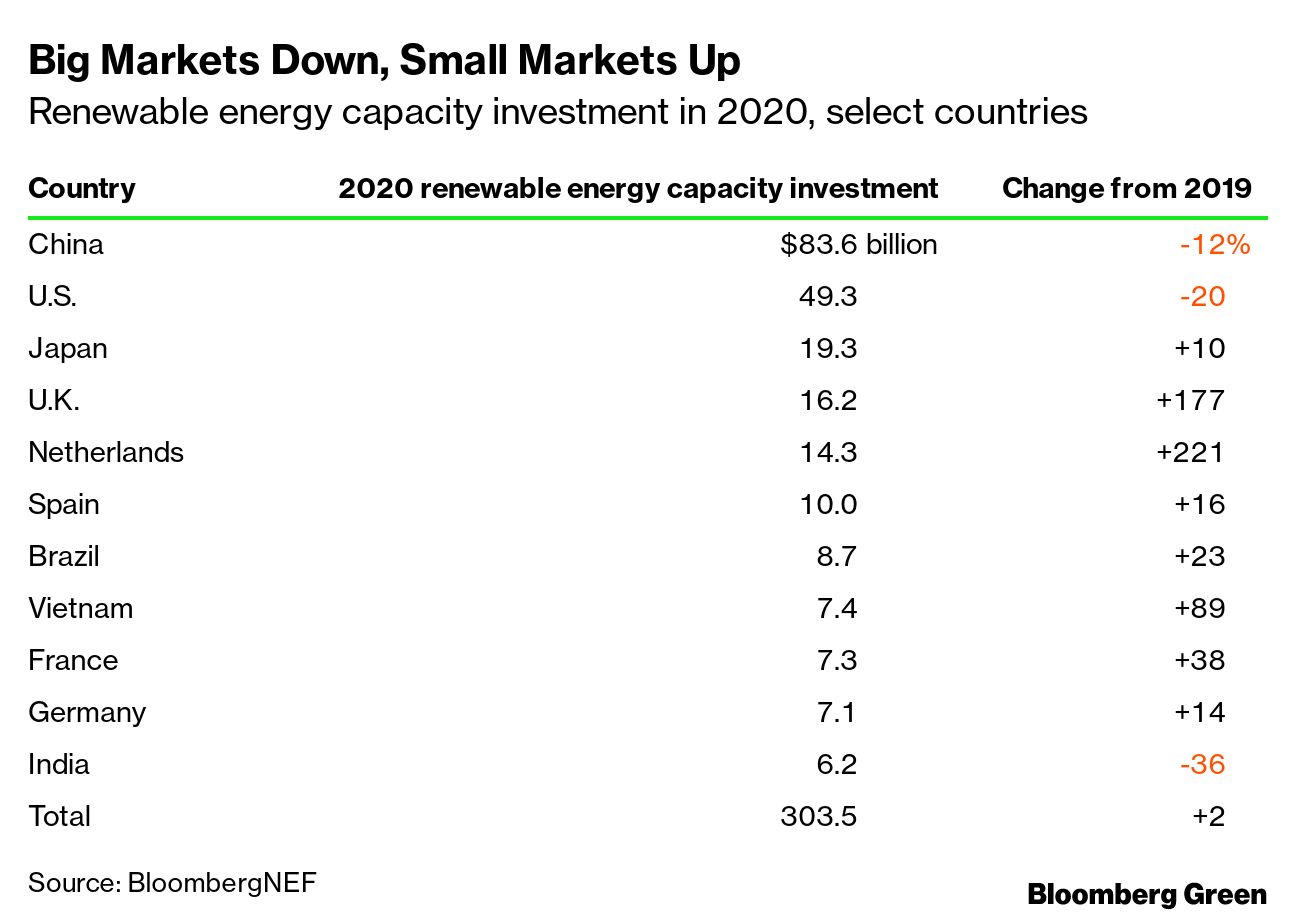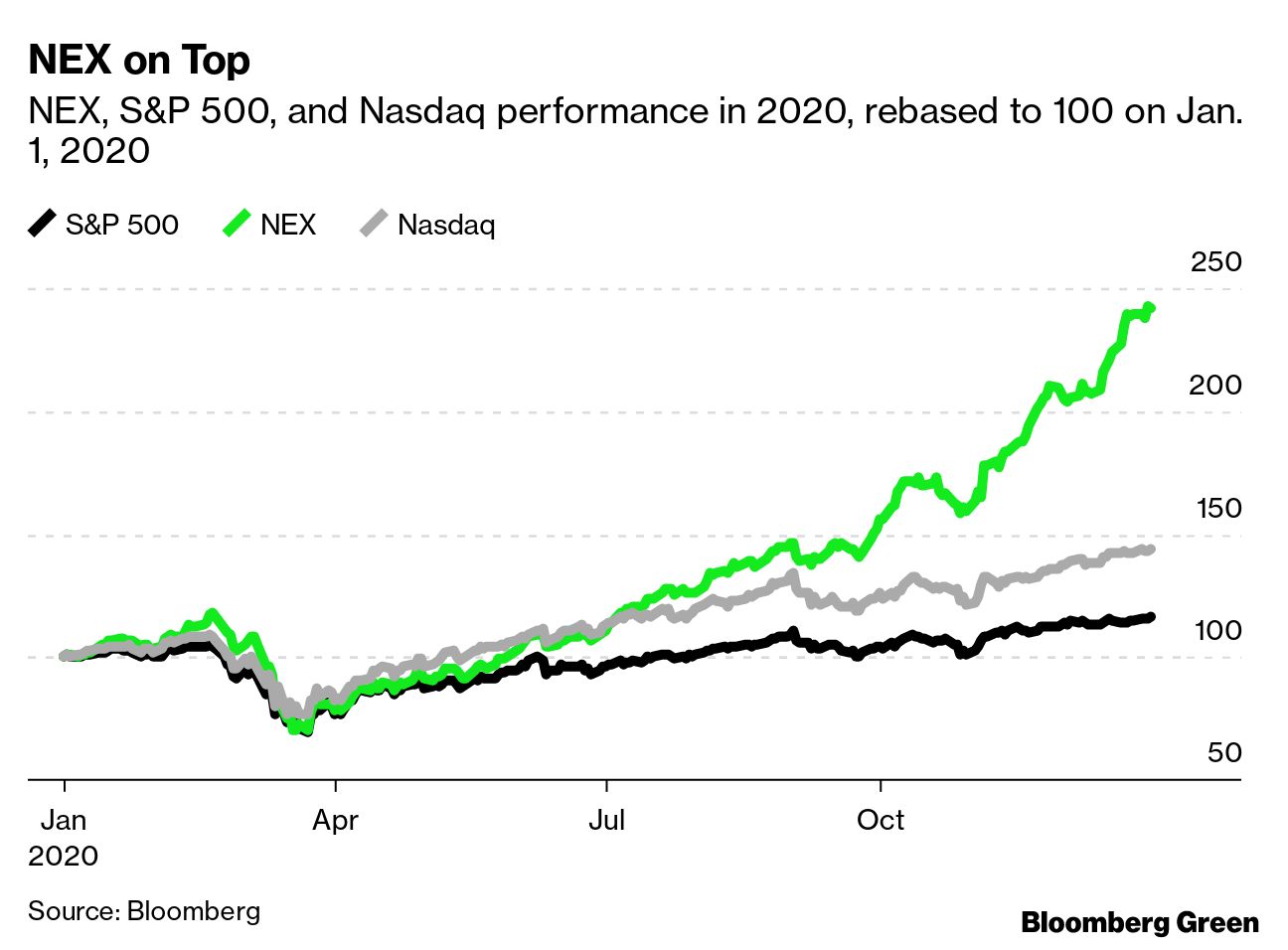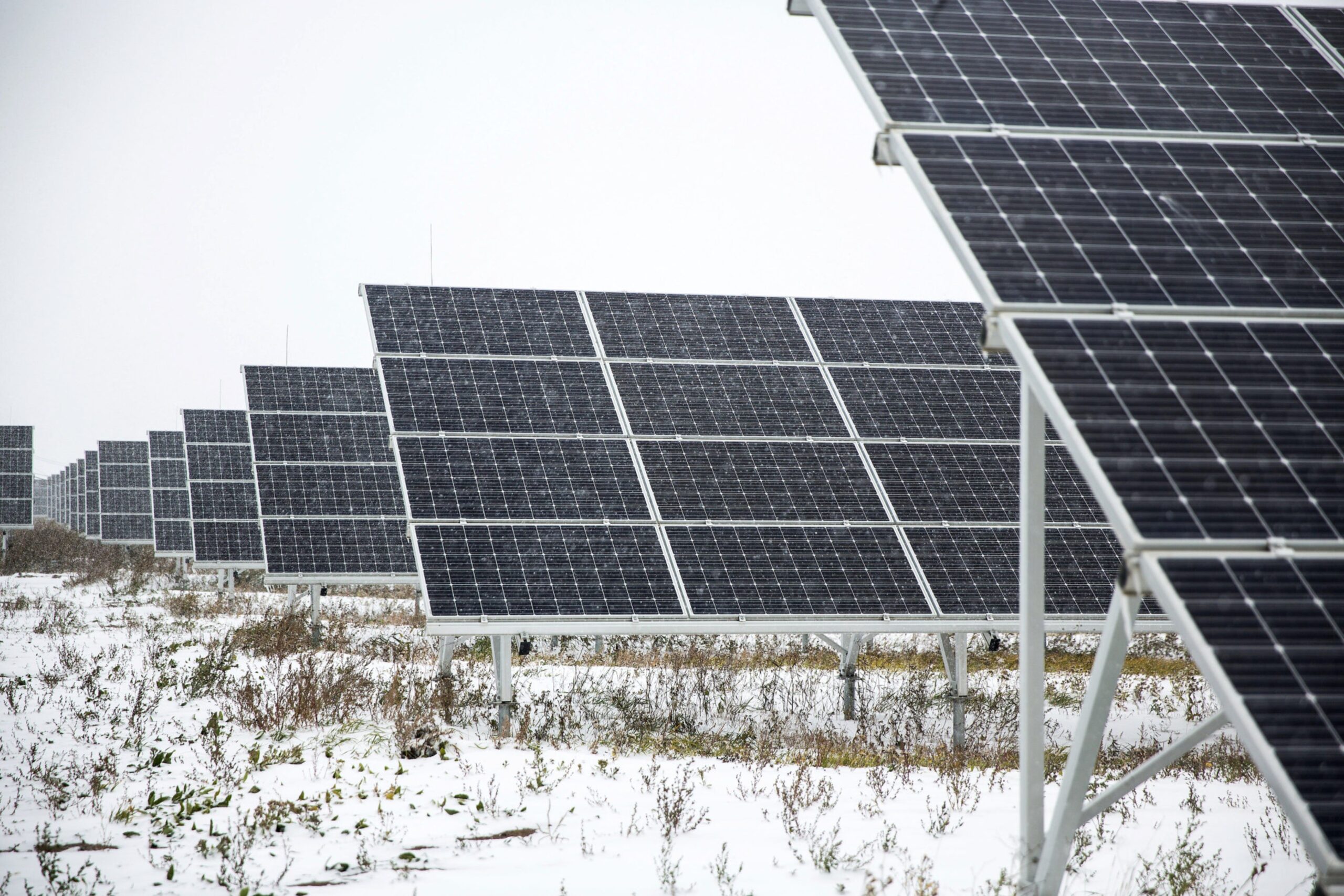(Bloomberg) —
Global investment in wind and solar power, biofuels, biomass and waste, small hydropower—the main technologies behind clean electricity—has expanded by nearly an order of magnitude since BloombergNEF first started tracking this data. In annual dollars terms, clean-energy investment surged from $33 billion nearly two decades ago to more than $300 billion last year. Growth in investment stopped in the mid-2010s.
But electricity is just one slice of the energy-transition pie. A new BNEF analysis including the electrification of heat and transport as well as nascent investment in energy storage, hydrogen, and carbon capture and storage shows that overall investment grew to $501 billion—nearly 70% higher than older, narrower estimates.

As ever, a big topline figure like a half-trillion dollars obscures several distinct trends. The first is a very real plateau in renewable energy investment, primarily in wind and solar. That isn’t necessarily a bad thing—while the dollars themselves may have flattened out, what you get for them certainly hasn’t. In the 15 years from 2005 to 2019, annual installations of wind and solar increased more than 13 times over. That’s a compound annual growth rate north of 20%.
To put it another way: annual installed capacity of wind and solar will double again in less than four years if it keeps up this pace. This is why my colleague Albert Cheung says that 2020 “put us back in the climate fight,” as installations continued to rise despite the economic and social disruptions caused by the coronavirus pandemic.

The second major trend obscured by that headline number: big markets invested less in renewable energy last year, while small markets invested way more. China’s new investment in renewable energy declined 12% in 2020, and U.S. investment dropped 20%. Meanwhile, U.K. investment was up 177%; Netherlands, 221%; and Vietnam, 89%.

Vietnam’s story in particular shows that small markets aren’t just moving fast in the transition to clean energy, they’re also not that small anymore. The country’s rooftop solar companies managed to jam in almost 9 gigawatts of capacity, including 6 gigawatts in December and 4.6 gigawatts just in the last week of the year. Not only is 9 gigawatts almost triple what BNEF had projected for Vietnam at the beginning of the year, it’s enough new capacity to make the country the third-largest solar market on Earth.
The third trend was a surge in investment in electrified transport, including infrastructure such as charging stations but mostly cars, trucks and buses. Vehicles aren’t typically viewed as investments, but every new electric vehicle purchase helps drive down manufacturing costs for the entire sector, which BNEF’s analysis of battery costs proves every year. As energy scholar Varun Sivaram puts it, “We’re approaching the point where direct end-customer investment (e.g. buying EVs) outstrips investment in clean energy by intermediaries (e.g. renewable energy developers).”
Finally, there’s been a jump in share price of publicly traded renewables companies. The NEX, an index of companies active in renewable and low-carbon energy, was up more than 140% last year, easily besting the S&P 500 and Nasdaq.

Companies also issued a record number of new shares. Renewable energy and energy storage companies also issued $20 billion of new shares last year, a record that was up almost 250% from 2019. That’s still less than the $28 billion electric vehicle companies raised on public exchanges last year, up from just $1.6 billion in 2019, and seven times the previous record set in 2016.
What does 2021 hold? You’re almost certainly reading this the day after President Joe Biden’s inauguration. The U.S. is now back in the Paris climate agreement, Arctic oil and gas leasing has been suspended, and the permit for the Keystone XL oil pipeline has been rescinded, paving the way for four years of supportive clean energy policy. Look for a roaring sustainable finance markets, 150 gigawatts (at least) of new solar built, 4.4 million new electric vehicles sold, and, sure, a few stock market bumps, too.
Admittedly, BNEF’s 2020 crystal ball was less than perfect—the word “virus,” for instance, wasn’t mentioned once. With millions of doses of vaccine already injected, perhaps this year’s predictions will (hopefully) be a bit more on point.
Nathaniel Bullard is a BloombergNEF analyst who writes the Sparklines newsletter about the global transition to renewable energy.
To contact the author of this story:
Nathaniel Bullard in Washington at nbullard@bloomberg.net
- BNEF is updating its 2020 installation figures because China’s data is truly extraordinary: it says wind installations were 72 gigawatts in 2020, and solar installations 48 gigawatts. The wind figure is 20% greater than all wind installations in 2019!





